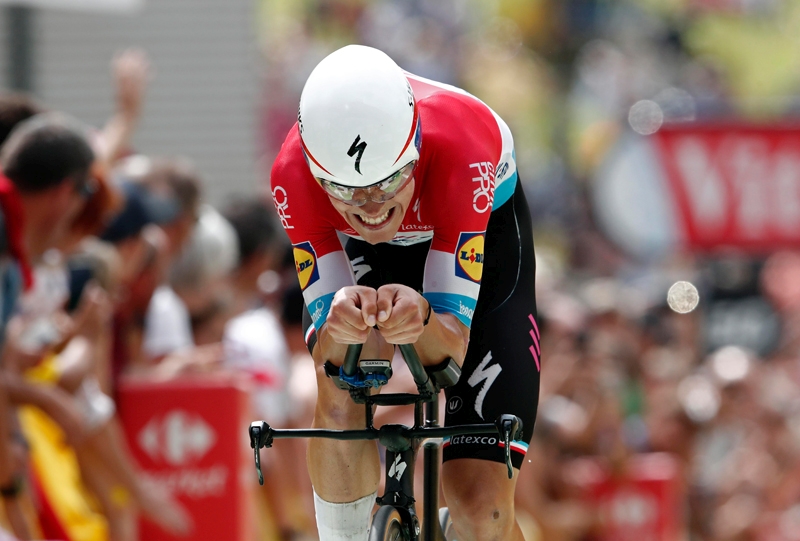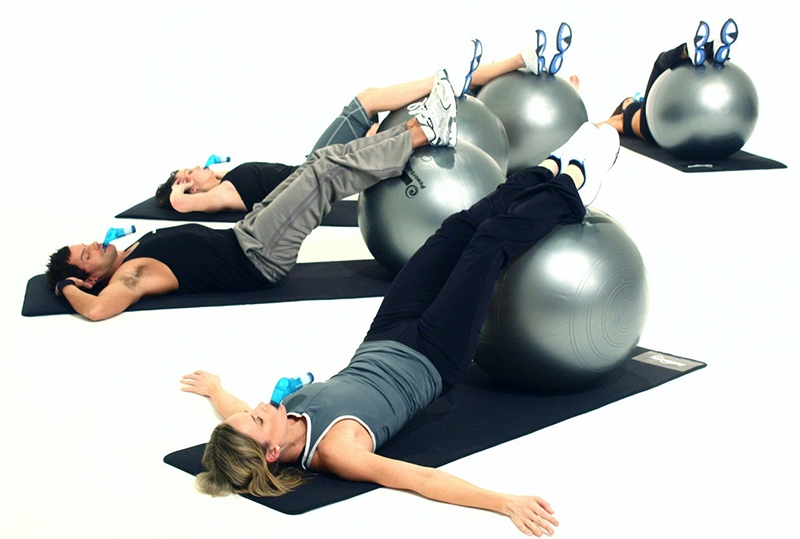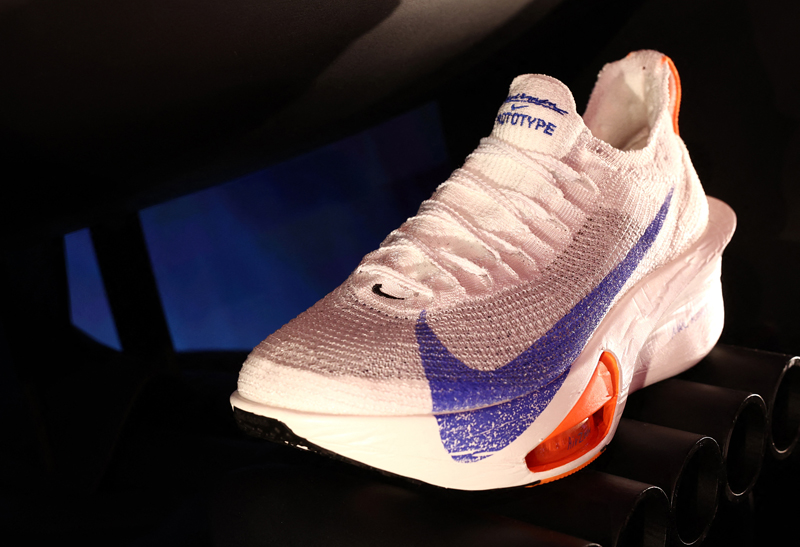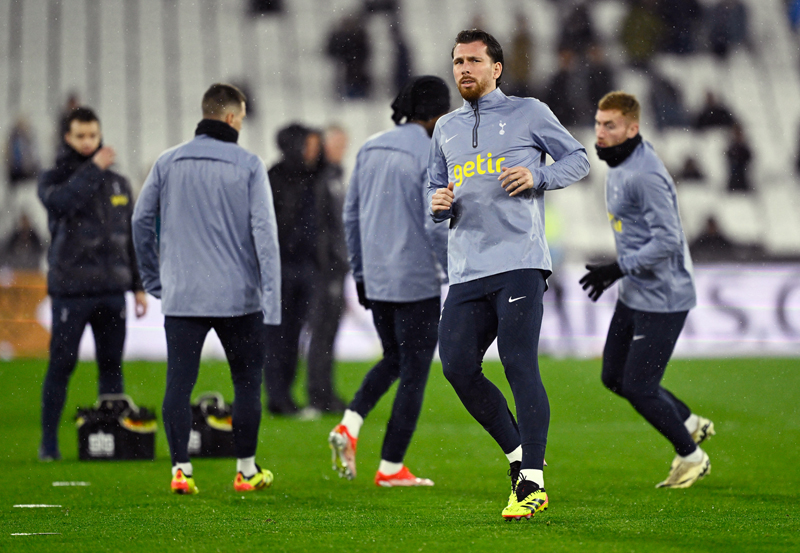You are viewing 1 of your 1 free articles. For unlimited access take a risk-free trial
Heavy breathing: should all athletes use IMT?
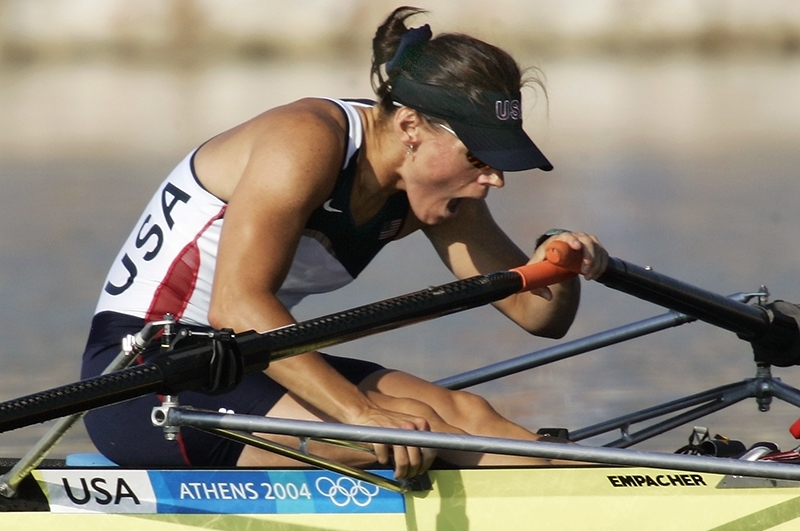
SPB looks at brand new research on inspiratory muscle training, and why more athletes should consider adding it their training routines
How important are the inspiratory (breathing) muscles for exercise performance? Until the early 2000s, the conventional thinking was that there is no respiratory limitation to exercise performance because maximal oxygen uptake is not theoretically limited by the transfer of oxygen across the lung, but by the ability to transport around the body and the muscles to utilize it. This being the case, what possible advantage could there be to increasing the ability of the respiratory pumping muscles to ventilate the lungs? In addition, the respiratory muscles were thought to be ‘super human’, and immune to fatigue, by virtue of their continuous activity throughout life.Respiratory muscles matter
However, in an elegant series of experiments, researchers at the University of Wisconsin identified that when the inspiratory muscles are subjected to fatiguing bouts of work (breathing against an added external load), they provoked a reflex change in vasoconstrictor output to the limbs(1). In plain English, when faced with fatigue, the inspiratory muscles signal the cardiovascular control centres to divert blood away from the working limbs.Further research demonstrated that if the work of breathing is manipulated during very intense cycling exercise, the severity of leg fatigue is also changed – if inspiratory muscle work is increased, then leg fatigue is increased, and if respiratory work is reduced (by allowing a ventilator to ‘breathe’ for the subjects) leg fatigue is reduced(2). This is entirely consistent with the inspiratory muscles maintaining a high position in the ‘pecking order’ for the supply of blood flow; in other words, the brain prioritizes oxygen supply to the respiratory muscles in order to keep the vital organs oxygenated – the working limbs are ‘told to take a back seat’, with their oxygenated blood supply dialled down when the respiratory muscles are challenged!
IMT training delivers
Subsequent research over the years has demonstrated that inspiratory muscle training (IMT – training the inspiratory muscles with a resistance device such as ‘PowerBreath’) may be used to overcome these limitations and improve athletes’ performance and respiratory efficiency(3-5). However, in nearly all of the past studies on IMT and sport performance, researchers have investigated on athletes performing long-distance and aerobic exercise, most notably running, swimming, and cycling.By contrast however, there’s been very little data on sportsmen and women performing IMT in sports involving shorter, more intense bursts of effort such as those required in middle and short-distance running and team sports such as soccer, rugby and football(6-8). In theory, we might expect that IMT would be less useful or ineffective for boosting performance in these shorter events because there is far less of a demand for sustained oxygen by the working muscles. But is this actually the case? Newly published research suggests not, and that IMT could actually significantly enhance performance in a much wider range of sports.
New research on shorter distances
In this study titled ‘Effects of 4-Week Inspiratory Muscle Training on Sport Performance in College 800-Meter Track Runners’ [Medicina (Kaunas) 2021; Jan 57(1):72. doi: 10.3390/medicina57010072], Taiwanese researchers investigated the effects of a 4-week program of inspiratory muscle training on respiratory muscle strength, limb blood flow change rate and (most importantly) 800m running performance in college middle-distance runners(9). Twenty 800-m college runners were randomized into one of two groups:- An IMT group, which performed IMT in addition to normal running training. This IMT consisted of 30 inspiratory efforts twice daily, five days a week using a PowerBreathe K-series IMT device (see figure 1). The IMT intensity was progressively increased from 50% in week 1 to 60%, 70% and 80% of maximum inspiratory pressure (MIP) for weeks 2, 3 and 4, respectively.
- A control group who performed running training along with ‘sham’ IMT training. These subjects performed the IMT exercises at 50% MIP throughout the 4-week intervention – a loading level that was not sufficient to bring about meaning improvements in inspiratory muscle performance (but because the subjects believed they were also performing meaningful IMT, this ensured the ‘placebo effect’ was removed!).
Figure 1: PowerBreathe K-series IMT device*
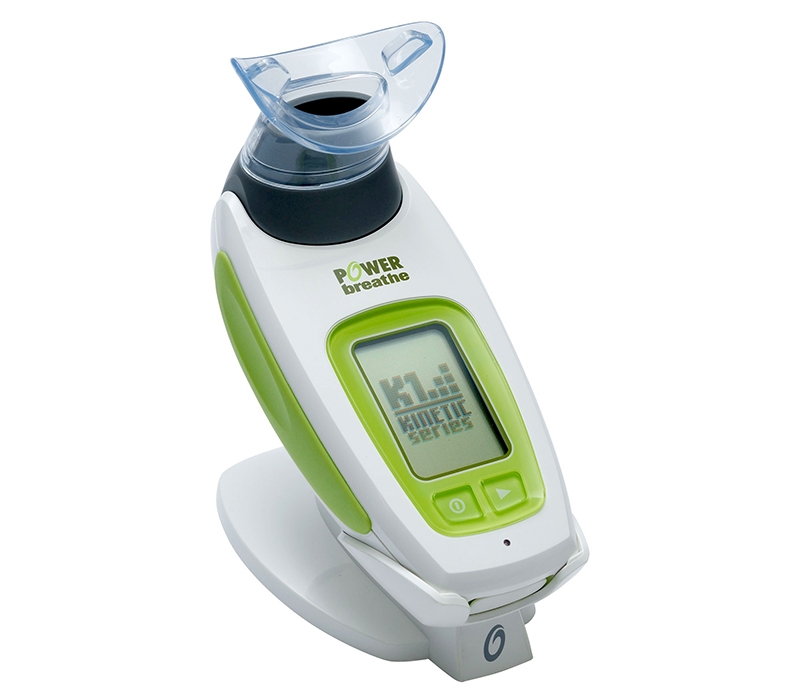
Shown here is the K1. The subjects performed IMT using the K2 – the same device but running slightly different software. *Image courtesy of PowerBreathe UK – www.powerbreathe.com/product/powerbreathe-k-series/
The findings
The key findings were as follows:- Compared to the control group, the IMT group significantly improved their MIP capacity, from an average of 112cmH2O to 131cmH2O. By contrast, the control group remained almost unchanged (116cmH2O to 117cmH2O).
- The IMT group slashed over six seconds off their 800m times (162.9secs before vs. 156.7secs after). This was compared to the control group that made no gains (166.6secs vs. 167.6secs).
Practical implications
These findings are significant. For starters, this is the first study to demonstrate that IMT can produce significant performance gains in athletes whose events are of a shorter duration (under 3 minutes) and not just in endurance based events (eg distance running, swimming, cycling etc). This has implications in terms of which athletes can expect to benefit from IMT. Secondly, these significant performance gains were noted after just four weeks of training, consisting of 40 x 90-second IMT sessions – ie just 15 minutes per week for four weeks (a great return on time invested). Previous research has suggested that up to 12 weeks of training is necessary for IMT benefits to appear(10); however, this study provides robust evidence that benefits can be had in a significantly shorter timescale.In terms of practical application, these findings suggests that a much wider range of sportsmen should consider adding IMT to their existing training programs, including middle and short distance event athletes and team athletes who experience high demands on the cardiovascular system during competition. There are a number of IMT devices available to purchase, although having developed the technology, PowerBreathe devices are definitely worth considering. These results suggest athletes can expect to see results in as little as four weeks using 40 sessions of 30 breaths with a progression in loading. Of course, there may be greater gains to be had by a longer intervention but this wasn’t tested in the above study. The handy thing about IMT devices is that they can be used at home, and with a session taking just 90 seconds, IMT can easily be slotted into any day-to-day routine with relative ease!
References
- Journal of Physiology 2001; 537:277-289
- J Physiol. 2006 Mar 1;571(Pt 2):425-39. doi: 10.1113/jphysiol.2005.099697
- J Strength Cond Res. 2013;27:1643–1663
- Eur J Appl Physiol. 2005;94:527–540
- Sports Med. 2012;42:707–724
- J Strength Cond Res. 2011 May; 25(5):1204-9
- Hong Kong Physiother. J. 2009;27:48–54
- J. Perform. Anal. Sport. 2005;5:73–88
- Medicina (Kaunas) 2021; Jan 57(1):72. doi: 10.3390/medicina57010072
- J Strength Cond Res. 2013 Jun; 27(6):1643-63
Newsletter Sign Up
Testimonials
Dr. Alexandra Fandetti-Robin, Back & Body Chiropractic
Elspeth Cowell MSCh DpodM SRCh HCPC reg
William Hunter, Nuffield Health
Newsletter Sign Up
Coaches Testimonials
Dr. Alexandra Fandetti-Robin, Back & Body Chiropractic
Elspeth Cowell MSCh DpodM SRCh HCPC reg
William Hunter, Nuffield Health
Keep up with latest sports science research and apply it to maximize performance
Today you have the chance to join a group of athletes, and sports coaches/trainers who all have something special in common...
They use the latest research to improve performance for themselves and their clients - both athletes and sports teams - with help from global specialists in the fields of sports science, sports medicine and sports psychology.
They do this by reading Sports Performance Bulletin, an easy-to-digest but serious-minded journal dedicated to high performance sports. SPB offers a wealth of information and insight into the latest research, in an easily-accessible and understood format, along with a wealth of practical recommendations.
*includes 3 coaching manuals
Get Inspired
All the latest techniques and approaches
Sports Performance Bulletin helps dedicated endurance athletes improve their performance. Sense-checking the latest sports science research, and sourcing evidence and case studies to support findings, Sports Performance Bulletin turns proven insights into easily digestible practical advice. Supporting athletes, coaches and professionals who wish to ensure their guidance and programmes are kept right up to date and based on credible science.

